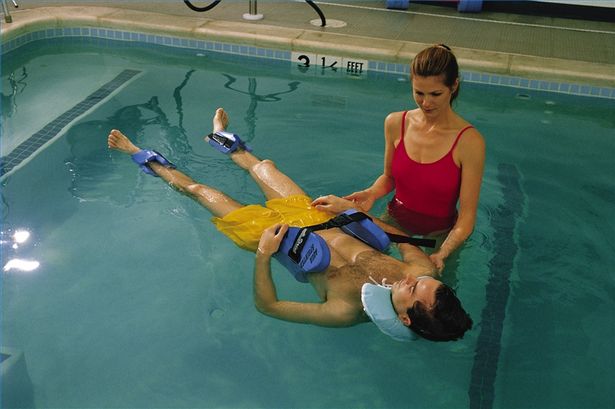Gene therapy treats all muscles in the body in muscular dystrophy dogs
Muscular dystrophy, which affects approximately 250,000 people in the U.S., occurs when damaged muscle tissue is replaced with fibrous, fatty or bony tissue and loses function. For years, scientists have searched for a way to successfully treat the most common form of the disease, Duchenne Muscular Dystrophy (DMD), which primarily affects boys. Now, a team of University of Missouri researchers have successfully treated dogs with DMD and say that human clinical trials are being planned in the next few years.
“This is the most common muscle disease in boys, and there is currently no effective therapy,” said Dongsheng Duan, the study leader and the Margaret Proctor Mulligan Professor in Medical Research at the MU School of Medicine. “This discovery took our research team more than 10 years, but we believe we are on the cusp of having a treatment for the disease.”
Patients with Duchenne muscular dystrophy have a gene mutation that disrupts the production of a protein known as “dystrophin.” Absence of dystrophin starts a chain reaction that eventually leads to muscle cell degeneration and death. Affected boys lose their ability to walk and breathe as they get older. This places significant limitations on individuals afflicted with the disease. Dystrophin also is one of the largest genes in the human body.
“Due to its size, it is impossible to deliver the entire gene with a gene therapy vector, which is the vehicle that carries the therapeutic gene to the correct site in the body,” Duan said. “Through previous research, we were able to develop a miniature version of this gene called a microgene. This minimized dystrophin protected all muscles in the body of diseased mice.”
However, it took the team more than 10 years to develop a strategy that can safely send the micro-dystrophin to every muscle in a dog that is afflicted by the disease. The dog has a body size similar to that of an affected boy. Success in the dog will set the foundation for human tests.
 In this latest study, the MU team demonstrated for the first time that a common virus can deliver the microgene to all muscles in the body of a diseased dog. The dogs were injected with the virus when they were two to three months old and just starting to show signs of DMD. The dogs are now six to seven months old and continue to develop normally.
In this latest study, the MU team demonstrated for the first time that a common virus can deliver the microgene to all muscles in the body of a diseased dog. The dogs were injected with the virus when they were two to three months old and just starting to show signs of DMD. The dogs are now six to seven months old and continue to develop normally.
“The virus we are using is one of the most common viruses; it is also a virus that produces no symptoms in the human body, making this a safe way to spread the dystrophin gene throughout the body,” Duan said. “These dogs develop DMD naturally in a similar manner as humans. It’s important to treat DMD early before the disease does a lot of damage as this therapy has the greatest impact at the early stages in life.”
###
This study, “Safe and bodywide muscle transduction in young adult Duchenne muscular dystrophy dogs with adeno-associated virus,” was published in Human Molecular Genetics and was supported by grants from the Department of Defense, Jesse’s Journey-The Foundation for Cell and Gene Therapy, the National Institutes of Health, Hope for Javier, the Kansas City Area Life Sciences Institute and MU. The content is solely the responsibility of the authors and does not necessarily represent the official views of the funding agencies
Duan also recently received a five-year, $3 million grant from the NIH to continue his research. The technology used to create the gene-therapy has been licensed by Solid Ventures, LLC.
###
Christian Basi
basic@missouri.edu
573-882-4430
###
University of Missouri-Columbia